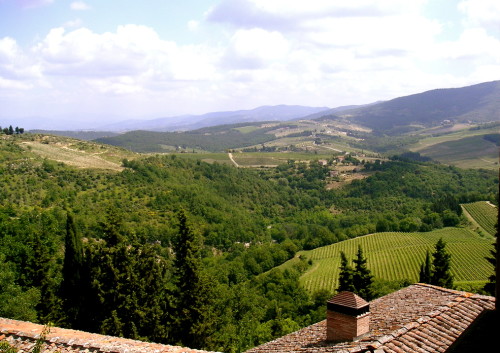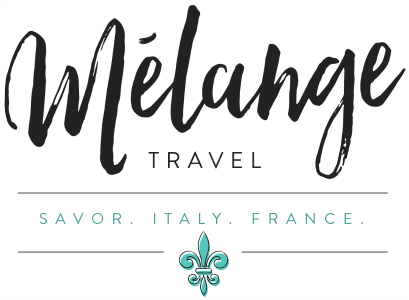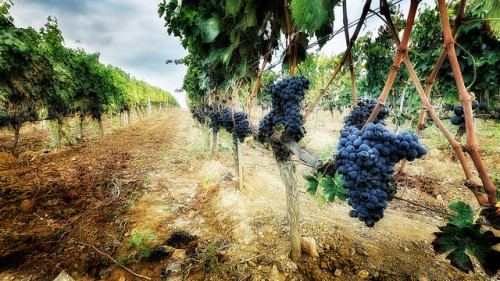No doubt about it, Tuscan wine is delicious. And even though it’s tasty at your own dinner table, there’s no better way to sample it then by touring the vineyards and wineries in Tuscany. Otherwise known as “the source”. You can’t get views of green rolling hills and cyprus trees from your dinner table.

But before you say, yeeeehah! let’s hop in the car and drive through the Tuscan countryside and we’ll stop at some wineries, it may not be that simple. Instead, slow your roll and follow this practical advice for a the most fruitful (yep, I had to) and enjoyable Tuscany wine tasting experience.
It’s bigger than it looks
Tuscany is a pretty big region. Everything looks right around the corner as the crow flies, but you can’t be fooled by that. You know all of those jaw-dropping photos you see of the green hills, terracotta rooftops and rows of grape vines, with the occasional windy dirt road? Well, those are the roads you’ll be driving to get from vineyard to vineyard, at 10 miles per hour, switchback after switchback, kicking up dust. This means it will take a really long time to get from place to place. So consider that when planning your visits. Google maps can be a pretty good tool in gauging times and distances.
Go Slow
With hundreds of wineries in Tuscany, you may feel the need to visit as many as humanly possible. For the reasons listed above, that isn’t practical. Instead of a wine tasting marathon, think of it more like a wine crawl. Don’t cram ten spots in one day, aim for three. Two would be ideal. Everything in Italy is done slower, so your visits will be more leisurely. You won’t have time to really experience and savor your wine if you rush through tours and tastings and drive all over the place. Spend more time at each winery and less time in the car.
Bring maps. Lots of them. And GPS.
It’s inevitable. You’re going to get lost at some point. So, I encourage you to bring along a GPS – whether it’s one you get with your rental car, or from your smartphone. I also highly advise you to bring a current, good ol’ fashioned road map of Tuscany. A very reliable one is the Regional Map of Toscana from Touring Club Italiano. Use them in tandem. It also might be a good idea to have a list of phone numbers for the wineries you plan to visit handy. You might just need them.
For more specific info and maps with vineyards and wineries visit the following Tourist Offices:
- On Via Giovanni di Verrazzano in Greve for a map of Chianti Classico wineries
- On Piazza Grande in Montepulciano for a map of Vino Nobile wineries
- On Piazza Cavour in Montalcino for maps of Brunello di Montalcino wineries
Know where to base yourself
I like to split the Tuscan wine region into two main areas, Chianti Classico to the north, and Val d’Orcia (think Brunello and Vino Nobile) and Maremma to the south. There are about 30 other varietals, but these are the most popular.
In order to find the best place to situate yourself, you need to consider several factors including, how many days you’ll be in Tuscany, how much of your trip you’ll devote to wine touring, what type of wines you like to drink and wish to learn more about, the type of wine-drinker you are (fun vs. serious), and what other towns you’re planning to visit during your time in Tuscany. Each situation is different, and sometimes a consultation can be helpful.
As a general rule, the area between Florence and Siena is a good place to base yourself for touring the Chianti Classico area, and Siena is a nice base for exploring and tasting Brunello, Vino Nobile and Rosso di Montalcino. If you only have a day or half-day, pick the style of wine you’re most interested in and focus on that area. Avoid basing yourself in Florence if your goal is to explore the Val d’Orcia and sample Brunellos. That’s just not the best use of precious tasting time. Or gas money.
Apparently, some Tuscan vineyards are a secret
Don’t expect vineyards and wineries to have large commercial signs, loaded with flashing lights and arrows announcing their location. You can bet there won’t be a cute Italian dude dressed like the fruit-of-the-loom grape cluster flagging you down in front of the entrance. Trying to find some lesser-known properties gives new meaning to the term hidden gem.
In some cases, you won’t even find the slightest hint that behind those iron gates or up that small dirt path, sits a highly-respected winery on a gorgeous estate. For whatever reason, some are well-kept secrets. I’ve had this experience before. Driven past the entrance, entered through a side gate and drove down a tractor path through the vines. Don’t ask me to explain or understand it. Just thank me for warning you and consider the wine your sweet reward for being persistant. Go you!
Make an appointment. And keep it.
Visiting vineyards and wine tasting in Italy isn’t the same as it is in the U.S. There aren’t always set tasting times and hours. Some larger producers, like Banfi or Ricasoli operate within normal business hours, and have staff, so you may be able to show up unannounced. But the majority of your visits will be to smaller vineyards and for that reason you should make an appointment.
And after making that appointment, it’s important to keep it and be on time. I know it’s common sense, but smaller producers are mostly family run and don’t have a staff waiting around, staring at the door in hopes that you will walk through. This is especially important in the fall, during Vendemmia (harvest time) when all hands are on deck. They are being kind enough to take time out of their busy lives to welcome you for a visit and show you around. Please, please be mindful of this, and respect it. Otherwise, it’s just plain rude. And it makes the rest of us look bad.
Mix it up
I like a nice combination of tours and tastings at larger operations as well as smaller mom and pop producers. You’ll have very different experiences at each place, learn different techniques, meet different people, sample different wines. Some will be structured, others more casual. Some might serve food, or have olive oil to sample, others offer a meal or a walk through the vines or tour of the cellar. Maybe throw in an organic winery. So mix it up for a diverse well-rounded experience. Drink. Experiment. Compare notes. Drink. Ask questions. Eat. Take photos. Drink. Take a walk. Have fun!
Take a guided wine tour
The best way to avoid having to worry about anything I’ve mentioned above, is to arrange an escorted wine tour. This also benefits the one unlucky soul who may miss out on tasting the juice after being volunteered (possibly by force, or being on the losing end of a cruel version of “Rock, Paper, Scissors – Tuscan Wine Edition”) to be the designated driver. A tour with a local, who has relationships with the wineries, can give you a more relaxed, insiders look . You’ll get to stare out the window at those gorgeous views, rather than having a meltdown in a poppy field in the middle of Tuscany, because your GPS has led you astray. It’s a no brainer, right?
If you’re heading to Tuscany and would like me to arrange a guided wine tasting experience, get in touch, I’d love to help!


